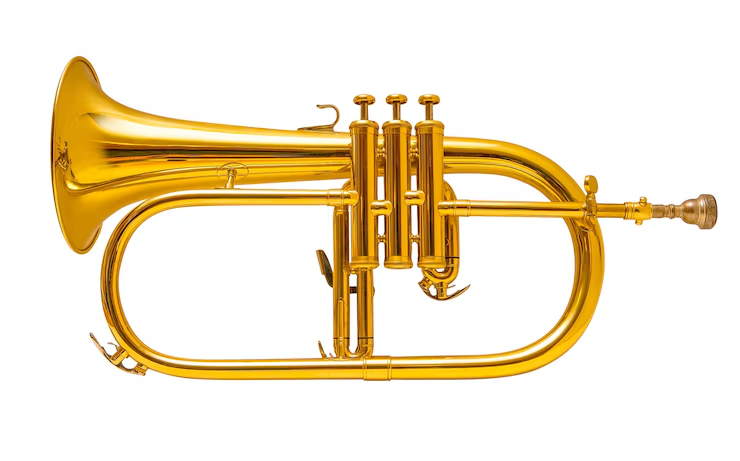Introduction
The flugelhorn, often described as a hybrid between a trumpet and a French horn. Is a distinctive brass instrument celebrated for its mellow tone and versatile musical capabilities. Originating in the 19th century, the flugelhorn has carved out a unique niche in both classical and contemporary music genres. This article explores the history, characteristics, musical uses, and cultural impact of the flugelhorn.
History and Origins
- Development: The flugelhorn was developed in the early 19th century in Germany and Austria. It was designed as a brass instrument with a wider, conical bore than the trumpet, giving it a mellower sound quality.
- Early Design: Initially used in military bands and orchestras. The early flugelhorn resembled a larger, deeper trumpet with a more pronounced bell shape and a wider mouthpiece. Over time, its design and construction evolved to enhance its tonal qualities.
Characteristics of the Flugelhorn
- Physical Attributes: The flugelhorn features a curved, conical bore that gradually widens towards the bell. Contributing to its warm and smooth tone. It is typically pitched in B♭ (B-flat), similar to many trumpets and cornets.
- Sound Characteristics: Known for its mellow and velvety timbre, the flugelhorn produces a softer, more rounded sound compared to the sharper, brighter tones of the trumpet. This makes it well-suited for lyrical melodies, ballads, and expressive musical passages.
Musical Uses and Applications
- Jazz and Popular Music: The flugelhorn gained popularity in jazz during the mid-20th century, thanks to musicians like Art Farmer, Clark Terry, and Chuck Mangione. Who showcased its ability to deliver emotive solos and smooth improvisations.
- Orchestral and Wind Ensembles: In classical music settings, the flugelhor’n is often employed in orchestral compositions, concert bands. And brass ensembles to add depth to brass sections and provide lyrical counterpoints to trumpet and horn melodies.
Cultural Impact and Legacy
- Versatility: The flugelhorn’s versatility spans various musical genres, from traditional jazz and Latin music to contemporary pop, rock, and even avant-garde compositions. Its ability to blend seamlessly with other instruments contributes to its enduring appeal.
- Innovation and Experimentation: Contemporary composers and musicians continue to explore the expressive capabilities of the flugelhor’n, pushing boundaries and integrating it into new musical contexts and genres.
Conclusion
The flugelhorn stands as a testament to the ingenuity and artistic expression found within the realm of brass instruments. With its mellifluous tone, historical legacy, and adaptability across musical genres. The flugelhorn captivates audiences and musicians alike, enriching compositions and performances with its distinctive sound. Whether in the hands of a jazz virtuoso, a classical soloist, or a contemporary ensemble. The flugelhorn continues to embody the timeless allure and musical versatility that define its place in the brass instrument family.







